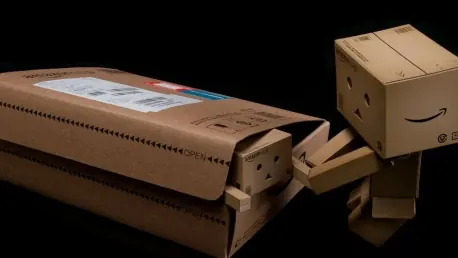In recent years, the landscape of electronic device packaging has seen a marked shift towards sustainability, driven by an increasing awareness of environmental impact. In October 2024, Amazon introduced redesigned packaging for its Kindle, Echo, and Fire TV products, reflecting a significant advancement in eco-friendly solutions. This new approach is 100% recyclable and integrates features to enhance accessibility while lessening environmental harm. Amazon has increased the recycled content by 30%, reduced ink usage by 60%, and added a tactile-marked QR code to aid visually impaired consumers.
Amazon’s New Packaging Innovations
Emphasis on Recyclability
Amazon’s redesigned packaging for its Kindle, Echo, and Fire TV devices is a testament to its commitment to sustainability. By ensuring that the packaging is 100% recyclable, Amazon has taken a significant step towards minimizing its environmental footprint. This effort is part of a broader industry trend, with many companies striving to reduce their reliance on single-use plastics. The new packaging also incorporates water-based coatings instead of plastic, reflecting a conscious effort to minimize environmental impact further.
The environmental benefits of these changes are substantial. By increasing the use of recycled content by 30%, Amazon is helping reduce the demand for virgin materials, which typically require more resources and energy to produce. The reduction of ink usage by 60% also plays a crucial role in diminishing the overall carbon footprint of the packaging. These changes align with Amazon’s broader goals to make all their device packaging 100% recyclable, a target they’ve nearly achieved with a 90% success rate as of 2023.
Accessibility Enhancements
Beyond sustainability, Amazon’s new packaging design includes features that cater to customers with disabilities. One of the standout additions is the tactile-marked QR code designed to assist visually impaired users. This thoughtful feature allows visually impaired customers to easily access important product information, such as setup guides and troubleshooting tips, ensuring that Amazon’s products are more accessible to all.
This innovation not only enhances the user experience but also underscores Amazon’s commitment to inclusivity. By integrating these tactile features, Amazon sets a precedent for other companies in the industry. It highlights the importance of considering the needs of all customers, including those with disabilities, during product and packaging design. This dual focus on sustainability and accessibility positions Amazon as a forward-thinking company that values both environmental responsibility and customer inclusivity.
Industry-Wide Shift Towards Sustainable Practices
Reduction in Packaging Waste
Amazon’s advancements are part of a larger trend among electronic device manufacturers shifting towards more sustainable packaging solutions. The e-commerce giant has significantly reduced plastic usage across various aspects of its packaging solutions. This reduction aligns with their broader strategy of minimizing environmental footprints. For instance, the company has seen a marked reduction in plastic air pillows and has transitioned to utilizing 100% recycled paper filler for broader delivery packaging needs.
Since 2015, Amazon has successfully reduced its average per-shipment packaging weight by 43%, showcasing a consistent effort to minimize packaging waste. This milestone represents not just a commitment to sustainable practices but also reflects a keen understanding of the importance of evolving industrial standards and consumer expectations. The achievement of reducing weight while maintaining packaging integrity ensures both efficiency and durability in product deliveries.
Other Companies’ Efforts
Amazon is not alone in its sustainability efforts. Companies like Lenovo and Google are also making significant strides. Lenovo’s incorporation of bamboo and sugarcane fibers to replace plastic in their packaging represents an innovative approach to sustainable materials. These natural fibers are not only biodegradable but also signify a move away from traditional plastic-based packaging solutions, aligning with eco-friendly guidelines.
Meanwhile, Google has successfully eliminated plastic from its hardware packaging, achieving its 2025 goal prematurely. This shift has been complemented by their development of a stronger, more stretchable paper, newer options that promise durability and sustainability. Similarly, Sealed Air has enhanced Best Buy’s e-commerce packaging by integrating more recycled content, demonstrating consistent progress in the sustainability arena. Collectively, these efforts indicate a growing consensus within the tech industry on the critical importance of sustainable packaging.
Conclusion
In recent years, there has been a notable shift in the packaging of electronic devices towards more sustainable practices, driven by growing environmental awareness. In October 2024, Amazon unveiled redesigned packaging for its Kindle, Echo, and Fire TV devices, marking a significant step forward in eco-friendly solutions. This new packaging is 100% recyclable and incorporates features to boost accessibility while reducing environmental impact. Among the improvements, Amazon has increased the recycled content by 30%, cut down ink usage by 60%, and added a tactile-marked QR code to assist visually impaired consumers. These changes reflect Amazon’s commitment to reducing its carbon footprint and promoting accessibility for all users. Amazon’s initiative is part of a broader movement within the tech industry to adopt sustainable packaging practices, addressing the growing concern over electronic waste and its environmental effects. By making these changes, Amazon not only lessens its ecological impact but also sets a new standard for other companies to follow.









